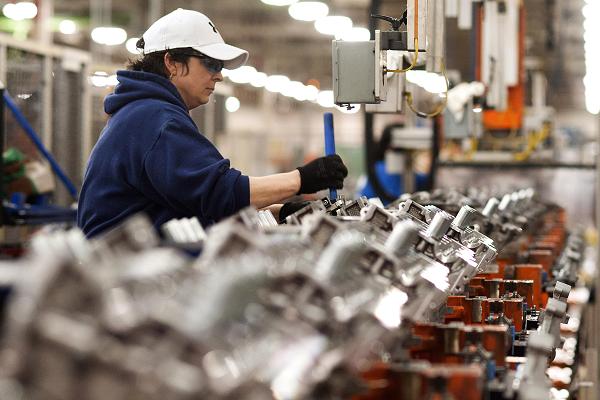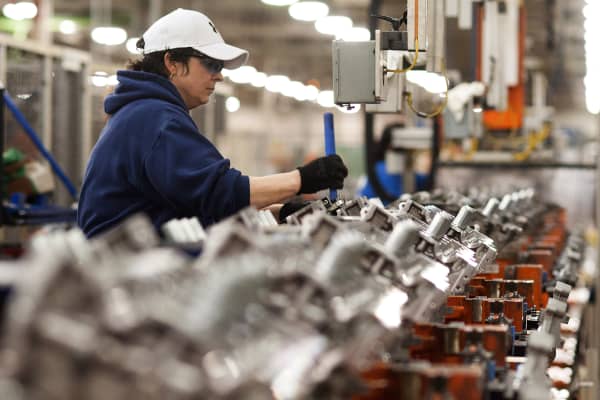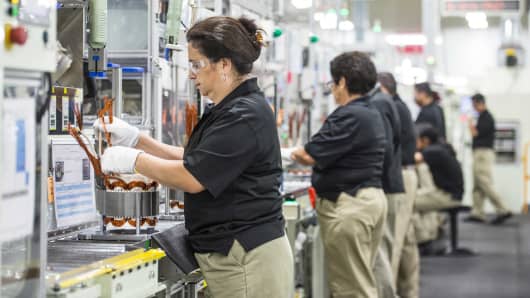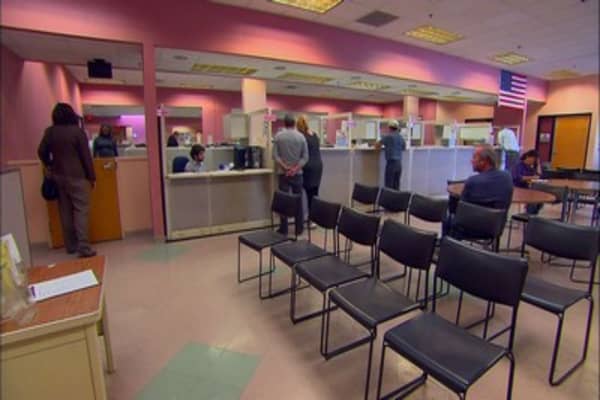Job creation in April bounced back from a disappointing March, with nonfarm payrolls growing by 211,000 while the unemployment rate fell to 4.4 percent, its lowest since May 2007.
Economists surveyed by Reuters had been expecting payroll growth of 185,000 and the headline jobless rate to tick up one-tenth to 4.6 percent. The payroll increase nearly tripled the dismal March number.
Market experts believe the report likely cements an imminent interest rate hike.
“The market has sorely needed a shot of unambiguously positive ‘hard’ data,” Quincy Krosby, market strategist at Prudential Financial, said in a statement. “This morning’s employment report suggests the Fed will most certainly move in June.”
Wages grew seven cents an hour to an annualized pace of 2.5 percent.
The unemployment rate dropped even as the labor force participation rate edged lower to 62.9 percent. The employment-to-population ratio increased to 60.2 percent, its best showing of 2017 and the highest level since February 2009.
“This just adds to the perception that it’s going to be easier and easier to find a job if you want one these days,” said Brian Coulton, chief economist at Fitch Ratings. “It’s job security that causes people to ask for wage rises. If it’s easier for them to get a job outside their company, they’re more likely to push for higher wages.”
An alternative reading on the unemployment rate that includes those not actively looking for jobs as well as those working part-time for economic reasons dropped to 8.6 percent from 8.9 percent in March, the best reading since November 2007. Those counted as not in the labor force swelled to 94.4 million but that was countered by an increase of 156,000 counted as employed, according to the household survey.
Job growth was concentrated in lower-paying areas, with leisure and hospitality adding 55,000 positions. Health care and social assistance rose 37,000, financial activities grew by 19,000 and professional and business services grew by 39,000. Government payrolls increased by 17,000 and mining rose 9,000.
The report comes a month after a dismal March that saw payrolls grow by just 79,000, a number that was revised lower from 98,000. That number dashed some of the hopes that the economy was poised for a breakout year in 2017. February’s reading grew, however, from 219,000 to 232,000.
The weak March payroll gain also closed out a disappointing quarter for U.S. growth overall, with gross domestic product rising just 0.7 percent.
Jobs skewed sharply to full-time positions, which grew by 480,000, while the part-time rolls tumbled by 370,000.
The Federal Reserve, at its two-day meeting earlier this week, projected that the weakness to start the year was likely “transitory” and likely to change as seasonal factors abate.
The central bank is widely expected to hike its benchmark interest rate a quarter point at its June meeting.
Chances of a hike rose following the jobs release, with traders now putting a 78.5 percent probability on June for a quarter-point raise. December remains the most likely month for another move with a 57.2 percent chance, up a percentage point from Thursday.
“The Federal Reserve, while not a religious entity, has indicated that its members have faith that the economy will return to a familiar, steady growth path after a lackluster start to the year,” said Mark Hamrick, senior economic analyst at Bankrate.com. “The April jobs report helps them to keep their own brand of faith, meaning that the odds are good that the outlook remains for rising interest rates.”
Get the market reaction here.
This is breaking news. Please check back for further updates.
Correction — A previous version misstated the number of leisure and hospitality positions.
Watch: Headline unemployment rate may not be best jobs measure



